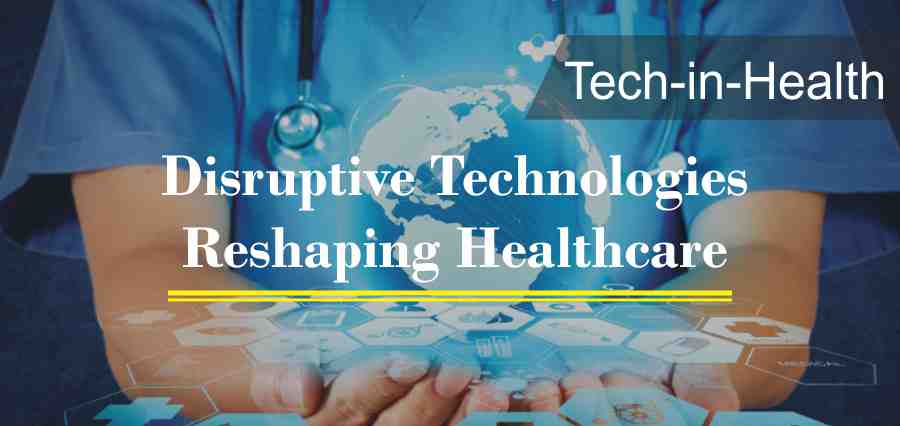Today, technology is playing an influential role in every industry as well as in our personal lives. Out of all of the applications that technology has affected, medicine is unquestionably one of the most significant. This merger of technology and healthcare is responsible for advancing and saving countless lives all around the world. As the reach of these technological innovations continues to grow from patient registration to data monitoring, from lab tests to self-care tools, it will change the whole healthcare industry as it unfolds. These advancements in the medical domain have allowed physicians to better diagnose and treat their patients ultimately saving countless lives and improving the overall quality of life over time.
There are so many amazing things going on worldwide in the field of medicine and healthcare. Technological advancements have contributed to services being taken out of the confines of the hospital walls, allowing earlier diagnoses, personalized treatments and integrating them with user-friendly, and accessible devices.
Here is a shortlist of some of the fabulous ideas and advancements would give us an insight of the future of medicine.
3D Printed Biological Materials
There are numerous successful uses of 3D printers today from guns to models, but the medical uses are very practical, and over time could solve open-ended health issues once it’s decided how to accurately apply them to people. 3D printers can be used to artificially grow Blood Vessels & Heart Tissue, Embryonic Stem Cells, Replacing Cartilage & Bone and Replacement of the Organs.
Remote Patient Monitoring
Monitoring programs can collect a broad range of health data from the point of care, such as vital signs, weight, blood pressure, blood sugar, blood oxygen levels, heart rate, and electrocardiograms. This data is then transmitted to health professionals in facilities such as monitoring centers in primary care settings, hospitals and intensive care units, skilled nursing facilities, and centralized off-site case management programs. Health professionals monitor these patients remotely and act on the information received as part of the treatment plan.
Spectral Computed Tomography
Spectral imaging is the next phase of CT’s progression. By obtaining images at two different energy levels; the technique can differentiate the different components in the body based on their substance density or atomic numbers. The differences are displayed as varying shades of gray or even colors on the final image. This technology is based on traditional CT scans by adding depth to the physiologic function of soft tissue with a dual-layer detector.
Miniature leadless pacemakers
The next generation pacemakers are 10 percent of the size of traditional pacemakers and are devised for only one heart chamber. It’s more effective than traditional models, but they are only ideal for 15 percent of the pacemaker patients. These leadless pacemakers are created to achieve the same pacing grades as a standard pacemaker, but the procedure for implanting the leadless pacemaker is different. Unlike a conventional pacemaker, a leadless pacemaker does not need the creation of a surgical pocket for the pacemaker, and it requires no leads. The pacemaker battery time is also equivalent to that of similar standard single chamber pacemakers.
Robotic Surgery
The robotic surgery landscape is rapidly evolving. The goal of using robots in medicine is to provide improved diagnostic abilities, a less invasive and more comfortable experience for the patient, and the ability to do smaller and more precise interventions. With robotic surgeries, the surgeon is still in the room, operating the robotic devices, but the technology allows for a minimally-invasive procedure that leaves patients with less scarring and significantly less recovery time.
Medical device cyber security
Most healthcare IT leaders integrate stringent security features for network infrastructures and EHRs – but not for their mobile devices. As many devices are attached to patients’ EHRs, C-suite members must perform threat assessments and know the devices and software connected to crucial patient data.
Wireless wearable sensors
As increasing number of consumers turn to wellness apps, devices, and wearable sensors, healthcare officials must learn how to utilize this data to reduce hospital stays and readmissions for those with severe and chronic conditions.
Blue-violet LED light fixtures.
These lights provide perpetual environmental disinfection technology to kill harmful healthcare-related bacteria which is a major reason of morbidity, mortality and elevated healthcare costs around the globe.
The era of embracing disruptive technological advancements by the healthcare industry has already begun. As the health industry discovers new and unique ways to provide better medical services, these advancements in healthcare will rise steadily and will provide sustainable engagement and powerful motivators to make health and wellness a part of our everyday lives.

Insights Success stands as the epitome of trust and authority. It has earned its reputation as the foremost source of business intelligence, providing readers with a gateway to the pulse of Bharat’s advancing business landscape.
Quick Links
Enquiry
info@insightssuccess.in
for more information on advertising opportunities with Insights Success magazine.
8793630422 / 24
Reach out to Us
Insights Success Media and Technology Pvt. Ltd.
512, Brand Square,
Kunal Icon Rd, Pimple Saudagar,
Pune, Maharashtra 411027

